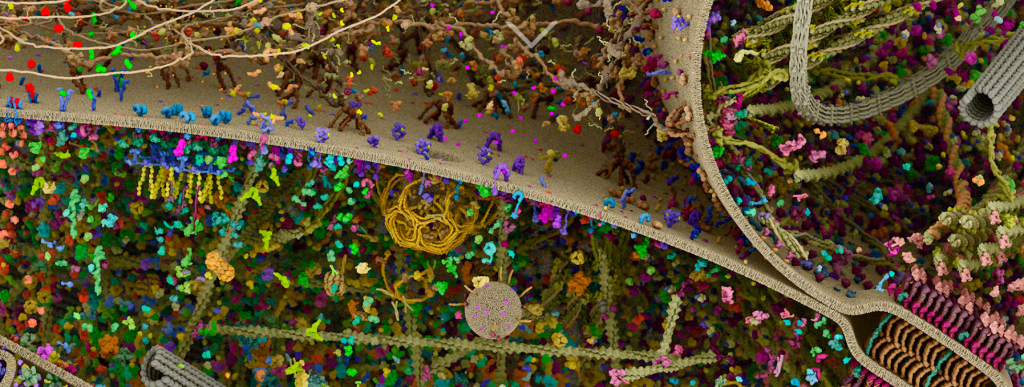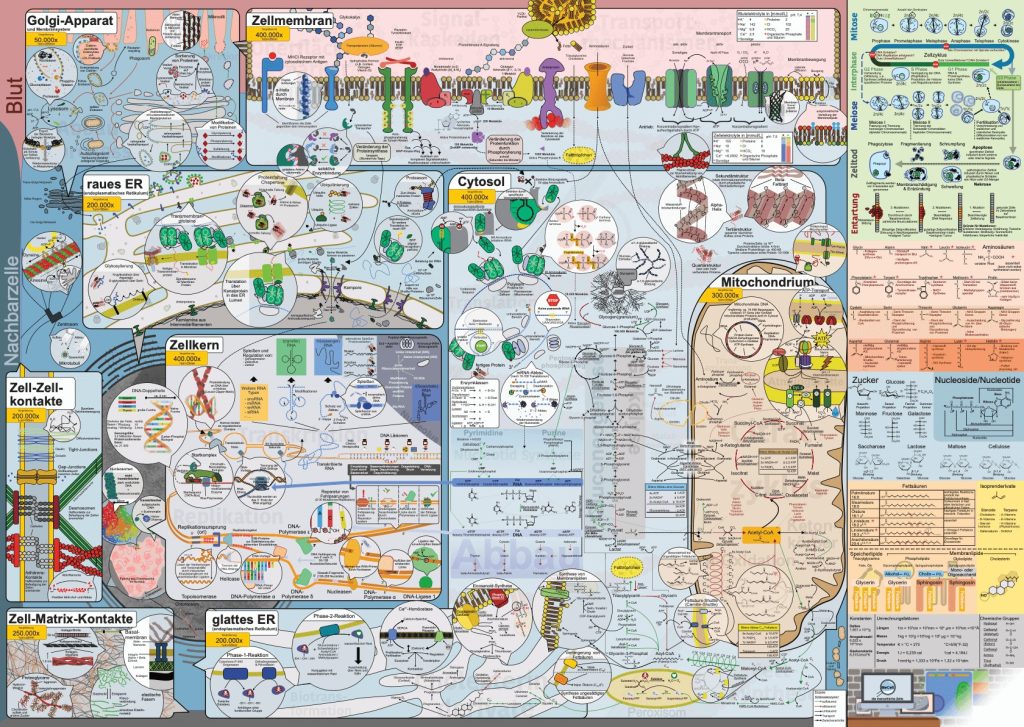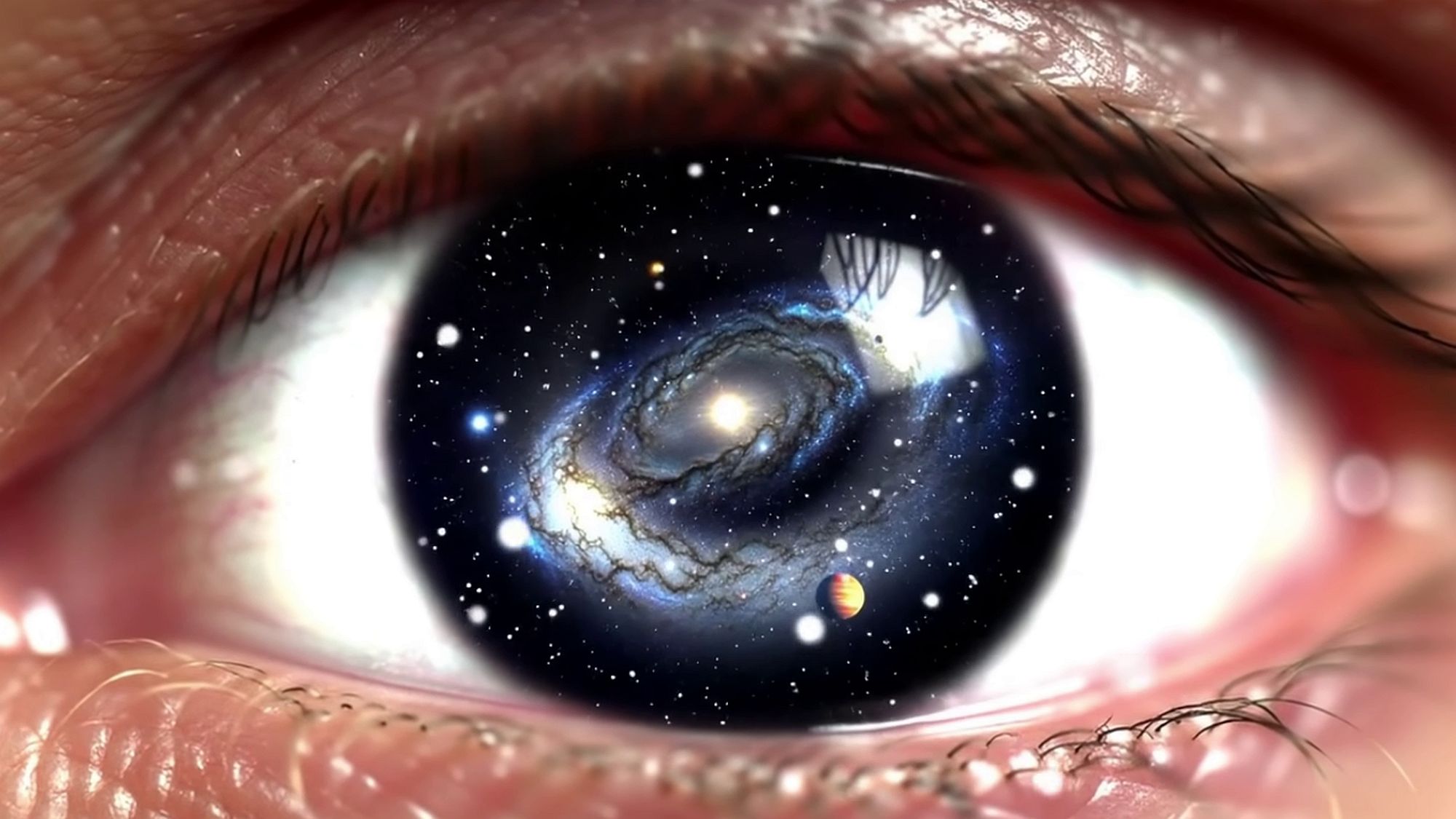
I’ve done computer programming myself, and in the 1990s, I already worked on self-learning language models. I know that in computer games, the focus of the highest definition and resolution is within the immediate field of view of the player. However, this is where a simulation differs from reality: reality has full resolution at every bit and pixel, not just at the center of the player’s attention. For instance, there are no non-player characters in reality—every person is a person.
To say some people are “NPCs” is dangerous nonsense. It’s the same as saying that some people are not human. Dehumanization is the denial of full humanity in others along with the cruelty and suffering that accompany it.
The tapestry of reality is far too intricate, too breathtakingly complex at every level to be the product of mere simulation. Rather, WE are the ultimate computers, brimming with extraordinary potential!
Imagine this: our bodies are composed of a staggering 100 trillion cells! If we dared to assign computational power to a single cell in bits, it might seem modest—akin to the early, groundbreaking Intel 4004 CPU with its mere 2,300 transistors. But wait! With 100 trillion cells, that’s a cosmic total of 230,000 trillion transistors at work in just one human body! You could say, I don’t think with my stomach. So, we have 87 billion nerve cells in the brain, equating to 197 trillion transistors.
To put that in perspective, some of today’s supercomputers boast an impressive 400 trillion transistors (Sunway TaihuLight).

Yet, our remarkable cells don’t just think—they act as atomic and molecular assemblers, performing intricate repairs, fostering growth, and generating energy! Each single cell is a microscopic marvel, assembled from about 100 trillion atoms. These surpass early computers in both function and capability.
Now, let’s crank it up! There are 8 billion humans inhabiting this planet. Add to that the countless organisms and cells that share our home—the fantastical diversity of life on Earth. Some estimates suggest there are one trillion different species (with only 1.2 million documented thus far), all contributing to the exquisite symphony of life that is around us.
The weight of life on our planet is unfathomable: approximately 545.8 billion metric tonnes of living matter! Each metric ton of living matter has about 1330 trillion cells.
So we have on Earth alone the organic computing power of four quadrillion one hundred seventy-four trillion five billion five hundred million supercomputers… by transistor.
But it’s not the number of “transistors” that is crucial in a neural network; it’s all in the number of connections. This is not fair to Intel: each transistor has three connections, but each nerve cell has about 10,000 connections.
And as we drift beyond our own blue planet, consider the cosmos—an estimated **2 trillion galaxies** peppered throughout the Universe. Each teems with at least **100 billion stars**. This means there could be a staggering **20 billion trillion planets** out there, waiting to be discovered! (Source: The Planetary Society)
All of this unfolds in a universe that has been running flawlessly for **16 billion years**—without ever requiring a reboot.
So, bring it on, technological singularity!
The orchestration of life and the cosmos is too magnificent, too complex, and too real for any mere simulation. Embrace the adventure that is our existence!
Fact check:
- 100 Trillion Cells: The statement that the human body has approximately 100 trillion cells is widely accepted in biological literature. However, various estimates exist, and some sources suggest that the number might be lower or higher, typically ranging from 30 to 100 trillion cells.
- Nerve Cells: The claim regarding there being around 87 billion neurons (nerve cells) in the human brain is well supported by neurological research.
- Transistor Comparison: The comparison of the number of cells to transistors in state-of-the-art supercomputers like the Sunway TaihuLight is a conceptual comparison rather than a strict quantifiable one. It’s accurate to say that modern supercomputers have hundreds of trillions of transistors. The exact figures can be checked based on current specifications from trusted tech sources.
- Biomass of Earth: The estimate of Earth’s total biomass being around 545.8 billion metric tons is consistent with recent studies. Numbers may vary slightly based on different methodologies of estimation.
- One Trillion Species: The claim that there might be one trillion different species is a hypothesis rooted in biodiversity studies. To date, around 1.2 million species have been described. Estimates of total species on Earth vary widely, with numbers often cited ranging up to over 8 million or more.
- 2 Trillion Galaxies: The figure of about 2 trillion galaxies in the universe is backed by recent astronomical studies. Observations made by telescopes like the Hubble Space Telescope support this claim.
- Planets in the Universe: The estimate of there being about 20 billion trillion planets can be derived from the average number of planets per star and the estimated number of stars in the universe.
Source: Mapping the 100 trillion cells that make up your body
https://theconversation.com/mapping-the-100-trillion-cells-that-make-up-your-body-103078
All the Biomass of Earth, in One Graphic
https://www.visualcapitalist.com/all-the-biomass-of-earth-in-one-graphic/
Numbers to Words Converter
https://www.calculatorsoup.com/calculators/conversions/numberstowords.php
Left: This is a digital representation of the components of one animal cell, not a photograph: https://www.digizyme.com/cst_landscapes.html
Right: Map of one human cell
https://mxschons.com/2024/mecell/
#matrix #simulationtheory #humancells #biology #singularity #omegapoint #CPU #biomass #astronomy #Trillions #Billions #Quadrillion



